The importance of respecting Vietnam temple rules
It is crucial that visitors to Vietnam temples show utmost respect for the local people's beliefs, cultural practices, and customs. By respecting Vietnam temple rules, you show reverence for the spiritual significance of the place.
Spiritual significance: Temples in Vietnam are not just ordinary buildings. They have great cultural and religious importance. These temples serve as a spiritual hub for the locals to practice their religious beliefs and seek blessings from their deities. Besides, Vietnam temples are considered sacred places where people can meditate and reflect.
Immerse in the local culture: Everything happens for a reason. By adhering to the Vietnam Temple rules, you can gain a better understanding of the essence of culture and society, as well as a way to practice integration with Vietnamese culture and grow your spiritual contemplation.
Dressing appropriately for your visit
Today, Vietnamese people are not too strict about what to wear to temples in Vietnam. However, if you dress inappropriately, you will attract unexpected attention. The keywords for what to wear to temples in Vietnam are comfortable yet modest and respectful attire. We recommend the following guidelines for your Vietnam temple outfit:
-
Cover your shoulders and knees. Both men and women should wear clothing that covers the shoulders and knees. At some famous temples, there are scarves provided for visitors. However, you can bring your own long scarf for flexible use.
-
Wear loose-fitting clothing. Tight clothing may also be seen as disrespectful. Loose-fitting outfits are also comfortable to wear and ideal in the hot and humid climate of Vietnam.
-
Avoid flashy jewelry or accessories. While it is not mandatory to remove jewelry or accessories, it is good to avoid anything that may appear too bright or extravagant. This can help in maintaining a low profile and avoiding unwanted attention or distractions.
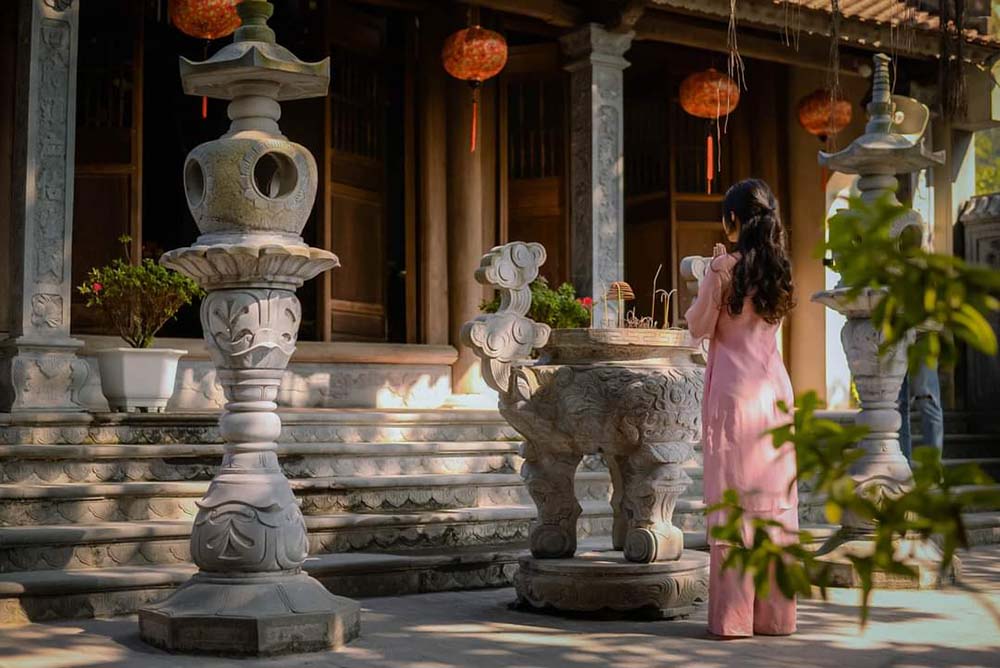
What to wear to temples in Vietnam.
Behavior Rules to Follow
One important reason behind the Vietnam temple rules lies in the religious philosophy. Temples are spiritual places where believers come to seek faith and show reverence for their religion, not to showcase their attire or behavior. Dressing simply and behaving politely when entering a temple also helps to create a peaceful and spiritual atmosphere that allows people to seek inner peace and tranquility, rather than focusing on the outside world.
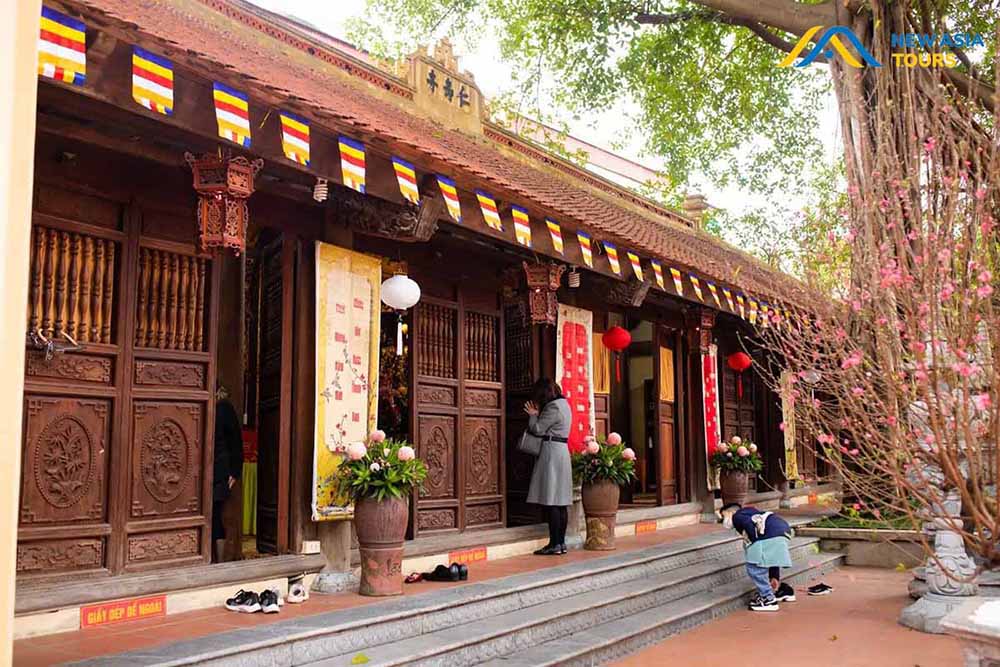
Remove your shoes before entering the temple
The keywords for proper conduct and behavior in temples are humility, politeness, and ease. Let's go through with New Asia Tour about the following regulations:
- Avoid talking loudly or making noise.
- Remove hats or sunglasses before entering the temples and pagodas.
- Do not touch or pick up any religious artifacts such as statues or offerings.
- Refrain from eating, drinking, or smoking inside the temple premises.
- Do not take photographs of the altar or any sacred objects without permission.
- Avoid pointing your feet toward any religious statues or holy objects.
- Show respect to the monks or other religious officials in the temple.
- Follow any specific rules or rituals stated by the temple authorities.
All of the above notes are very simple to do. They are definitely not strict things that become barriers to your cultural and religious experiences. On the other hand, these Vietnamese temple rules embrace interesting cultural philosophy and practical norms as highlights for your Vietnam exploration journey.
Offering Etiquette at Vietnam's Temples
Incense offering: Vietnamese people believe that burning incense symbolizes sending one's breath and spiritual flame to the divine spirits to pray for good things. This ritual expresses respect and gratitude. Incense is usually lit by igniting the top part on a flame in a windless area until it starts to burn and produce smoke. After placing incense sticks in the incense holder, the person offering incense bows to pray or recites Buddhist sutras.
It is not necessary to burn incense and make offerings at all altars. People can simply light one stick of incense at the beginning then bow and pray at the remaining altars. In some temples, incense is already lit by monks, so visitors do not need to offer too much incense.
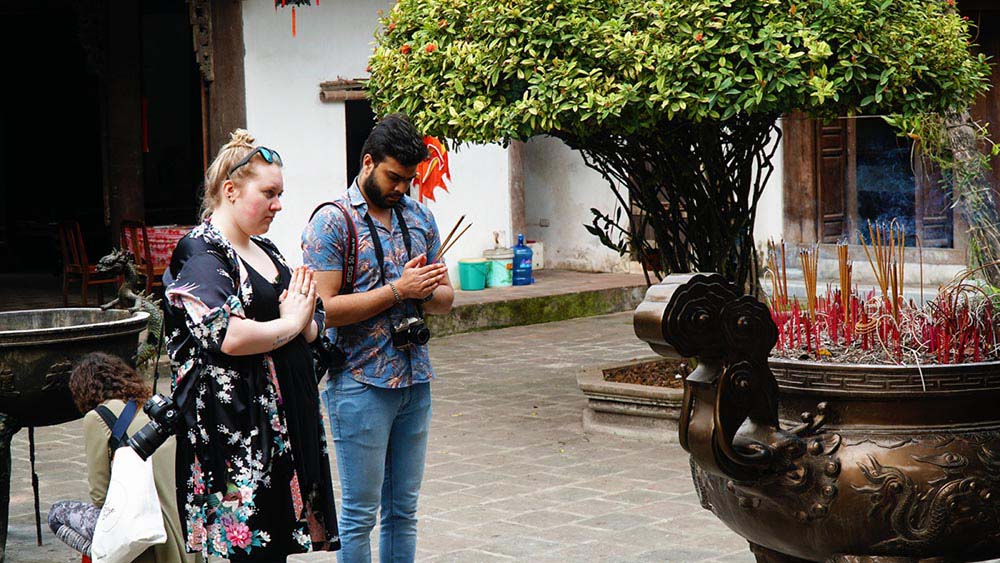
People offer incense and pray with respect
Offerings of fruits and flowers: Visitors can buy fruits and flowers beforehand, clean and wash them at home then bring them to the temples to offer on the altar. Often, there are also many items sold outside of temples for the offering. It includes not only flowers and fruits but also joss paper, sticky rice, cakes, vegan food, etc...
Sometimes, these items are already organized well. Visitors only need to purchase at the temple and arrange them on a plate to offer on the altar. Usually, temples have designated areas for preparing offerings, with trays provided for this purpose.
Leave a donation: When entering a temple, you will see people placing loose change on the altar or putting it in the donation boxes. Some will directly donate a larger amount of money to the temple representative at the pagoda and have their contributions recorded. It is customary to leave a small donation to help maintain the temple.
Sometimes, the form of donation can also be contributing goods to the temple such as food, stone benches for visitors to sit, and planting trees in the temple grounds.
What to Do If You Violate Vietnam Temple Rules
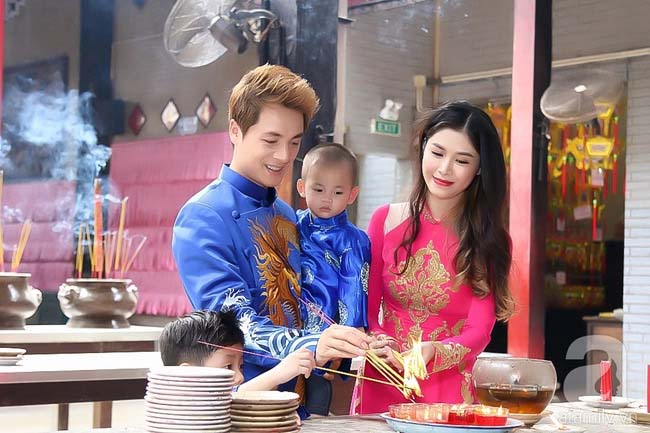
A family visit temple on Lunar New Year
Visitors should observe, be mindful of the temple's ambiance and refrain from any disrespectful behavior. By doing so, visitors show their respect for the local people and contribute to maintaining the temple's spiritual integrity. If you are unsure about the rules and protocols of a particular temple, it is always best to ask the temple staff or a knowledgeable member of the community for guidance.
If you unexpectedly violate the rules of a temple in Vietnam, the best thing to do is to sincerely apologize and follow the prescribed steps for making amends. Depending on the severity of the violation, the temple authorities may require you to make a formal apology, perform a ritual cleansing, or provide an offering or donation.
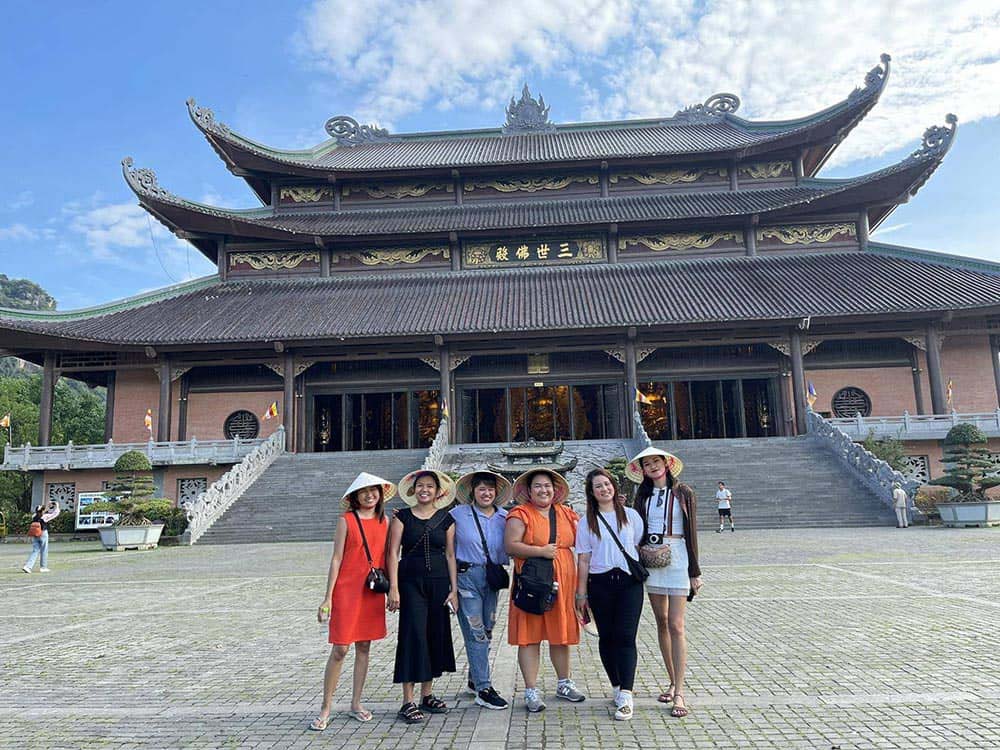
Enjoy your trip to Vietnam temples.
With this blog about Vietnam temple rules, you now understand Vietnam temple outfits, the rules to follow, and some exciting information to prepare for your actual trip. If you encounter any difficulties or need a local supporter for your journey, kindly contact New Asia Tours for the best Vietnam trip!



